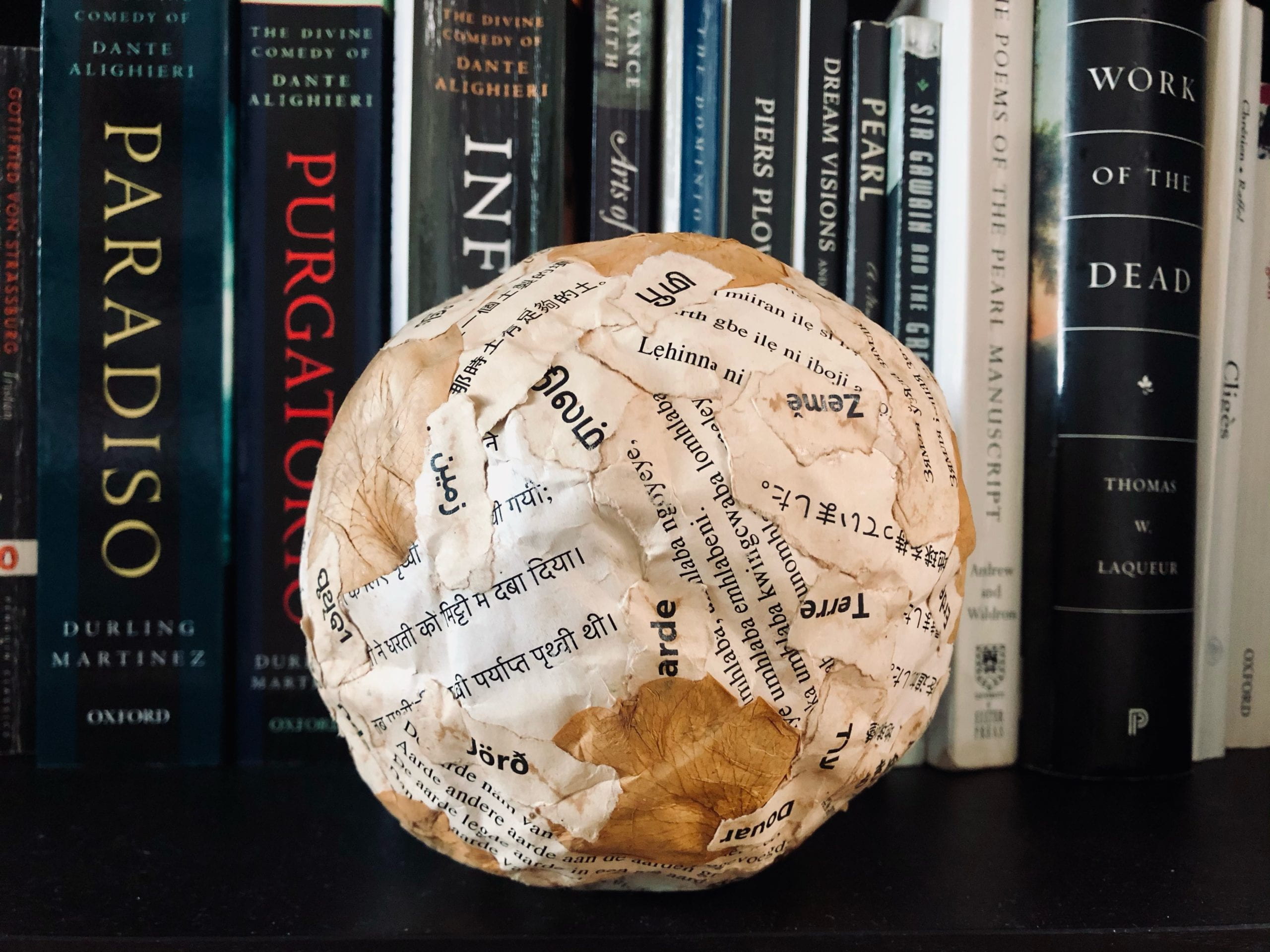| Category | Text |
| Form | Poetry |
| Author | Unknown |
| Time | Mid 14th Century |
| Language | Middle English |
| Featured In | Death, Mourning and Memory in Medieval Literature (YHU3345) |
The anonymous poem “Earth Upon Earth” (Middle English: “Erthe Upon Erthe”) is an ambiguous exploration of the circularity of human experience upon earth – one that sees humans come from and return to the earth in life and death.
THE POEM

| Middle English | Translation |
| Erþe toc of erþe erþe wyþ woh erþe oþer erþe to þe erþe droh erþe leyde erþe in erþene þroh þo heuede erþe of erþe erþe ynoh | Earth took of earth, earth with woe, Earth other earth to the earth drew, Earth laid earth in an earthen tomb, Then had earth of earth, earth enough. |
REFLECTIONS AND ENGAGEMENT
Since reading this poem in the very first week of this course, I have carried it with me in the back of my mind, contemplating the relationship between man and the earth and what it means to be alive. This concern eventually culminated into a creative project.

CREATIVE PROJECT BY OSHEA REDDY (‘24)
Erthe
Sculpture
An Interpretation of “Earth Upon Earth”
Death, Mourning and Memory in Medieval Literature (YHU3345)
2021
Artist’s Remarks
In my creative interpretation, I chose to create a spherical model comprised of layers of torn pieces of paper and pressed rose petals. In trying to capture the poem’s idea of the earth being a vessel containing the human life cycle within it, I envisioned this sphere to be an embodiment of both the earth and the endless cycle of life to death that is contained within it. The poem is equivocal in how it conflates the past and the present, the beginning and the end, and puts forward contradictory ideas of comfort and claustrophobia. To capture this ambiguity, my sphere is made up of recycled materials in an attempt to extend their lifespans by giving them new purpose. For instance, the dried rose petals are of a dead rose; in using its petals in the model, I recognize that I have created an ambiguous moment in the rose’s lifespan, where it is neither entirely dead nor entirely alive.
The pieces of paper have been soaked in tea to obtain a sepia tint, and they have both the poem and the word “earth” printed on them in as many different languages as I could fit onto the model. This was in an attempt to exhaust the capacities of each individual language in trying to express death, mirroring the manner in which the poem pushes linguistic capabilities in its intense repetition of the word “earth”. In the single word “earth”, the poem captures the entirety of human existence by speaking of the condition of our mortality without once mentioning the word “death”.
Ultimately, my sphere – ‘ball’ – became a physical manifestation of my reading of the poem, allowing me the exhilarating opportunity to indulge in the magic of cyclical existence and the powers of the earth in creating and ending human existence.
IMAGE CREDITS
[Fig. 1] https://www.semanticscholar.org/paper/Of-Earth-You-Were-Made%3A-Constructing-the-Bilingual-Harrington/97150b0cee93ca06ac6f99b1ef518a0c7cc4a041
CONTRIBUTED BY OSHEA REDDY (’24)

